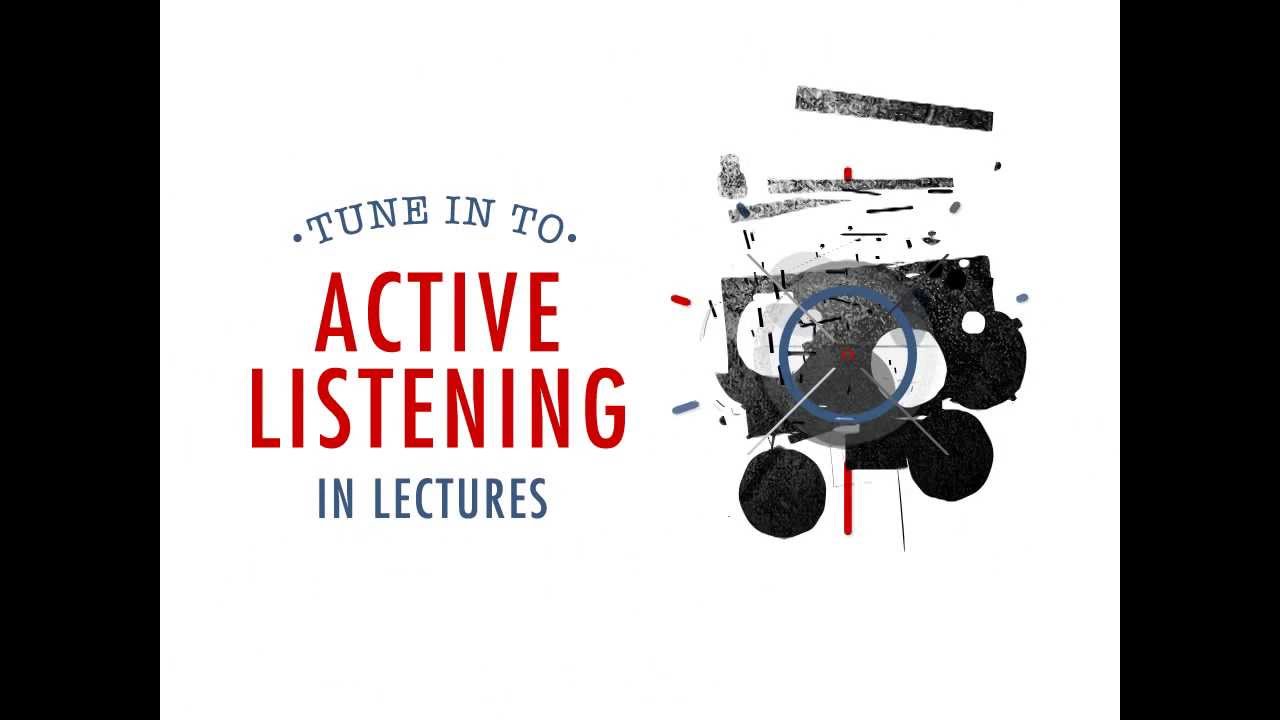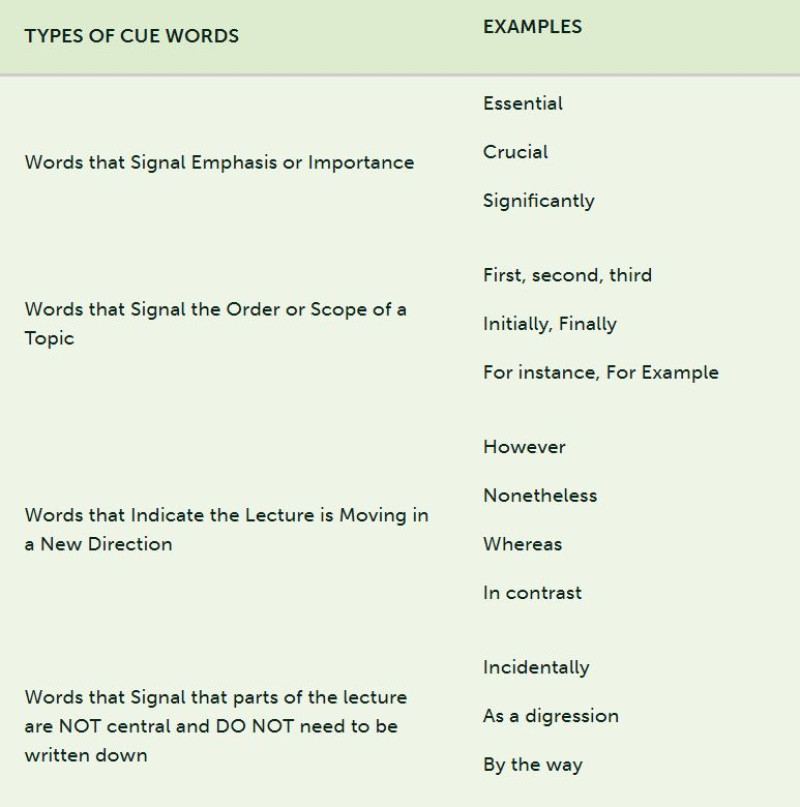Listening to lectures
How to prepare for a lecture, how to listen during a lecture, and how to solidify what you heard after a lecture.
Listening in Lectures
Listening to lectures can be made easier if you have done some reading about the topic prior to the lecture. At the lecture, active listening is important, so that you are able take concise notes on the salient points, to be expanded later on.

During the lecture
It is not necessary to record the lecturer’s every word or idea. Listen for important points.
- Listen for relationships between ideas in texts, class discussions, and the lectures.
- Listen for cue words; they help you cluster and prioritise information.

(Source - Trent University)
What to Do After the Lecture
It is important to review your notes soon after the lecture ends.
-
Read through your notes as soon as you can after the lecture ends. Highlight or underline main points. Try to fill in any gaps in your notes.
-
Respond to and reflect on your notes in the margins of the paper. You can use the Cornell Method or any other method you prefer.
-
Discuss your notes with a friend or study group. This can help you to process information, fill in gaps in your notes, and deepen your understanding of the main
points. -
Make flashcards or lists of key terms. You don’t need to wait for the end of the semester to start preparing for exams. Take a few minutes to put key vocabulary terms or concepts on index cards or a list of terms with a brief definition.
-
Keep your notes organized so you can find them. Indicate paper code, lecture title, and date of the lecture. File your notes together by paper and organize them chronologically for easy access; this strategy works for handwritten or typed notes.